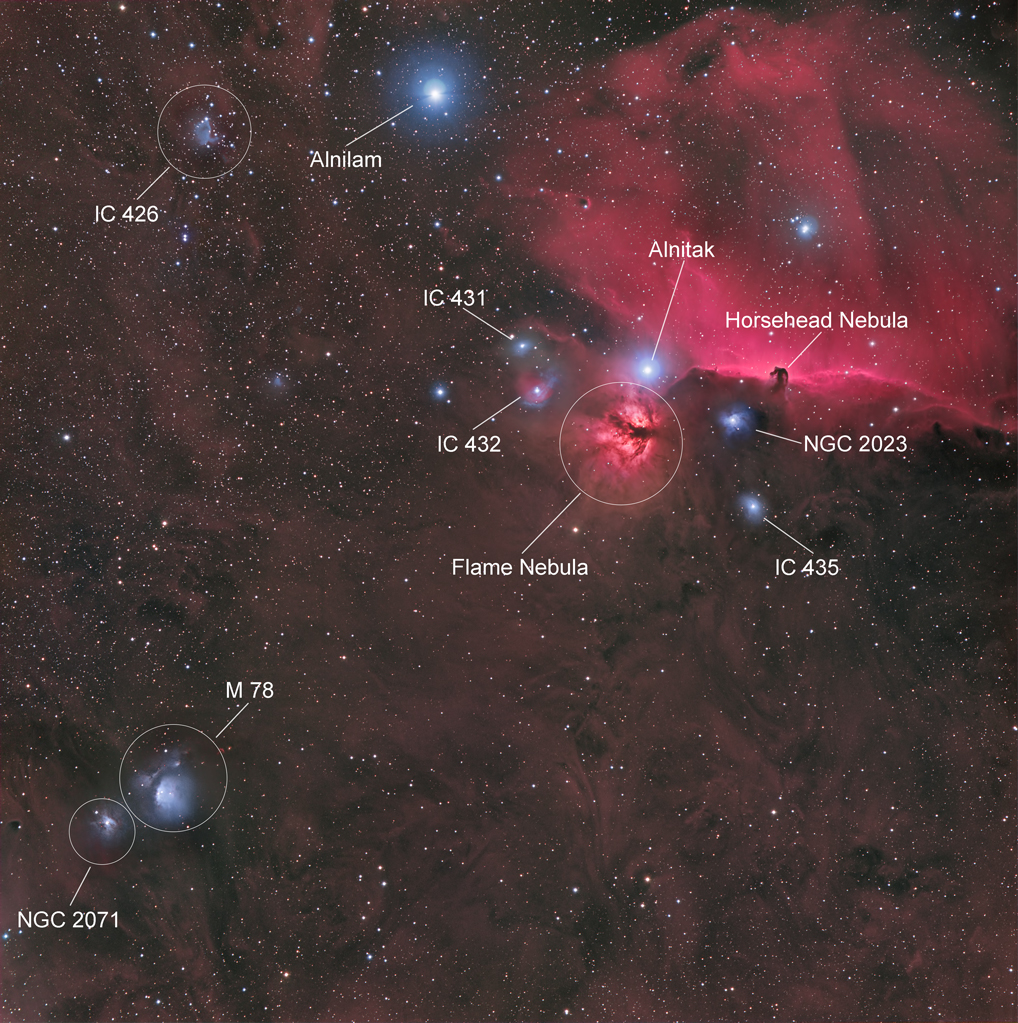The Horsehead Nebula
Characteristics:
Position Angle: 85 degrees
RA: 05h 42m 48s (J2000)
Dec: - (minus) 01 degrees 21' 25" (J2000)
Description:
This is one of the most interesting
regions of the night sky,
containing 3 different types of nebulae: emission, reflection,
and dark. The Horsehead Nebula itself, also known as Barnard 33
(B33), is
part of an enormous dust cloud that extends to the left and downward in
this
photo, obscuring light from behind (notice the relative lack of stars
in
the lower half of the image). Red light from IC434, the large
emission nebula coursing diagonally through the field, is partially
obscured by the Horsehead itself. IC434 is actually part of a
large gasseous region in Orion, extending towards and involving the Great Orion Nebula
(M42). To the upper right of the
Horsehead at 1 o'clock is the bright star Sigma Orionis, which is
responsible for producing the UV radiation that excites hydrogen atoms
in IC434 to emit in the red. To the left of the Horsehead is the
large
Flame Nebula, aka NGC2024 or Orion B. This is also an emission
nebula,
although the stars reponsible for its glow are buried deep inside and
are
not visible. Notice the dark lanes or "veins" within the Flame,
which
are thought to represent an extension of the same dark nebula
responsible for creating the Horsehead. The bright star located
just above the Flame Nebula is Alnitak, aka Zeta Orionis. Alnitak
forms the left hand
portion of Orion's
belt and is much
closer to us than either the Horsehead, IC434, or NGC2024 (and it is
therefore
not responsible for illuminating any of the other objects in the
field).
Finally, there are several beautiful blue reflection nebulae in
this
image, visible because they are in the foreground of the dark nebula
itself.
These reflection nebulae include IC435,
NGC2023, IC432, and IC431. M78
is also captured in this widefield image, located in the lower left
hand corner.
Photographic
Details:
Dates of image acquistion: January 6, 7, and 8, 2021
Scope:
Takahashi
FSQ106 at f5 on the Takahashi NJP
Mount
Autoguider: SBIG ST-402
with
60mm guidescope, focal length 227mm
Camera:
Apogee U16M at -20C, with
7 position 50mm square filter wheel (Apogee FW50-7S)
Filters: Baader
Ha, Baader RGB filters
Exposures: Total
exposure 17 hours
Post-processing:
Calibrated, aligned and
stacked in Maxim, followed
by DDP
in ImagesPlus (IP). Further
processing in Photoshop CS (16
bit format)
Please
note: Graphics on this website
may not be reproduced without author permission.
Back to Latest
Images
Back to Nebulae
Home



